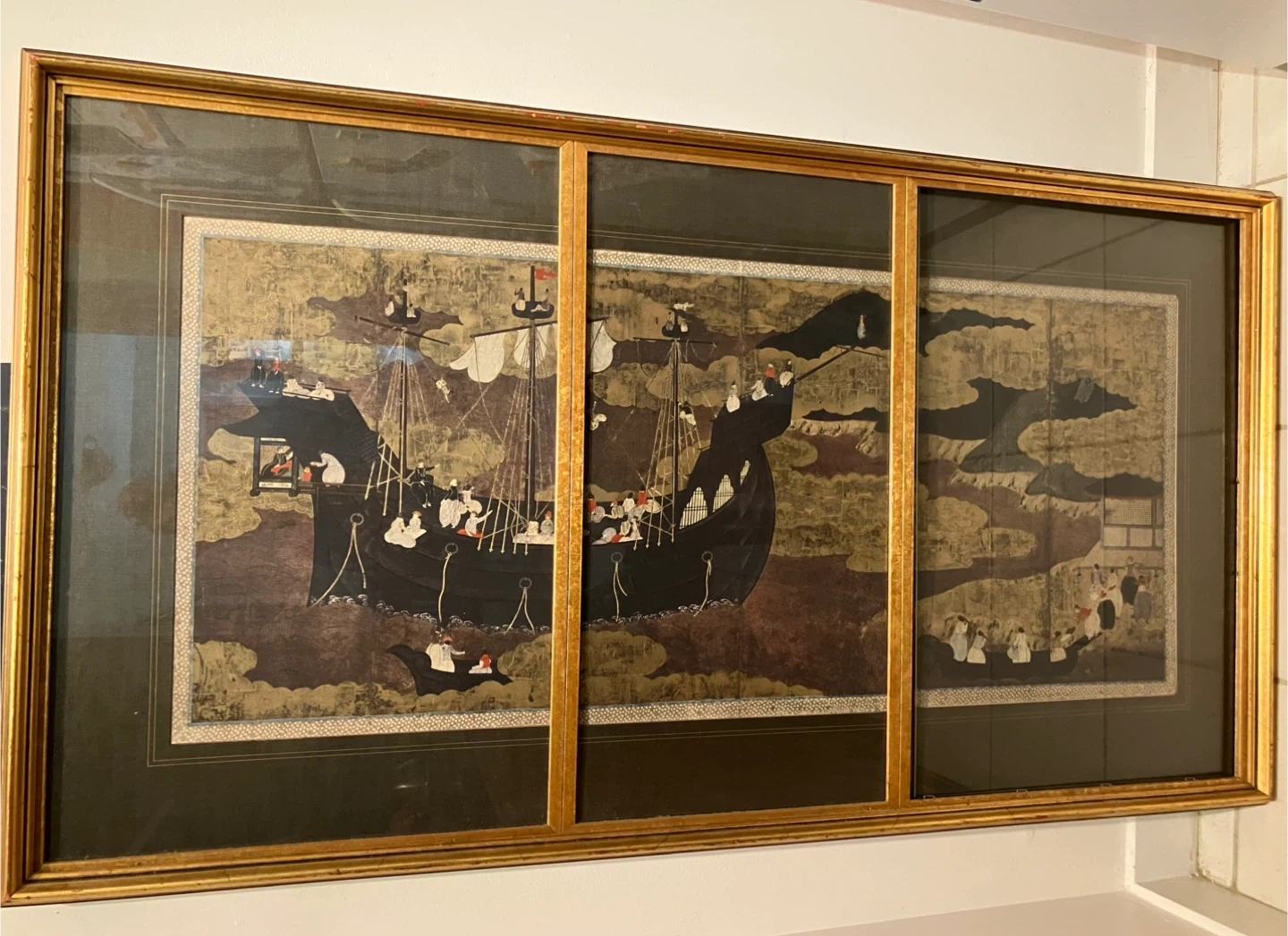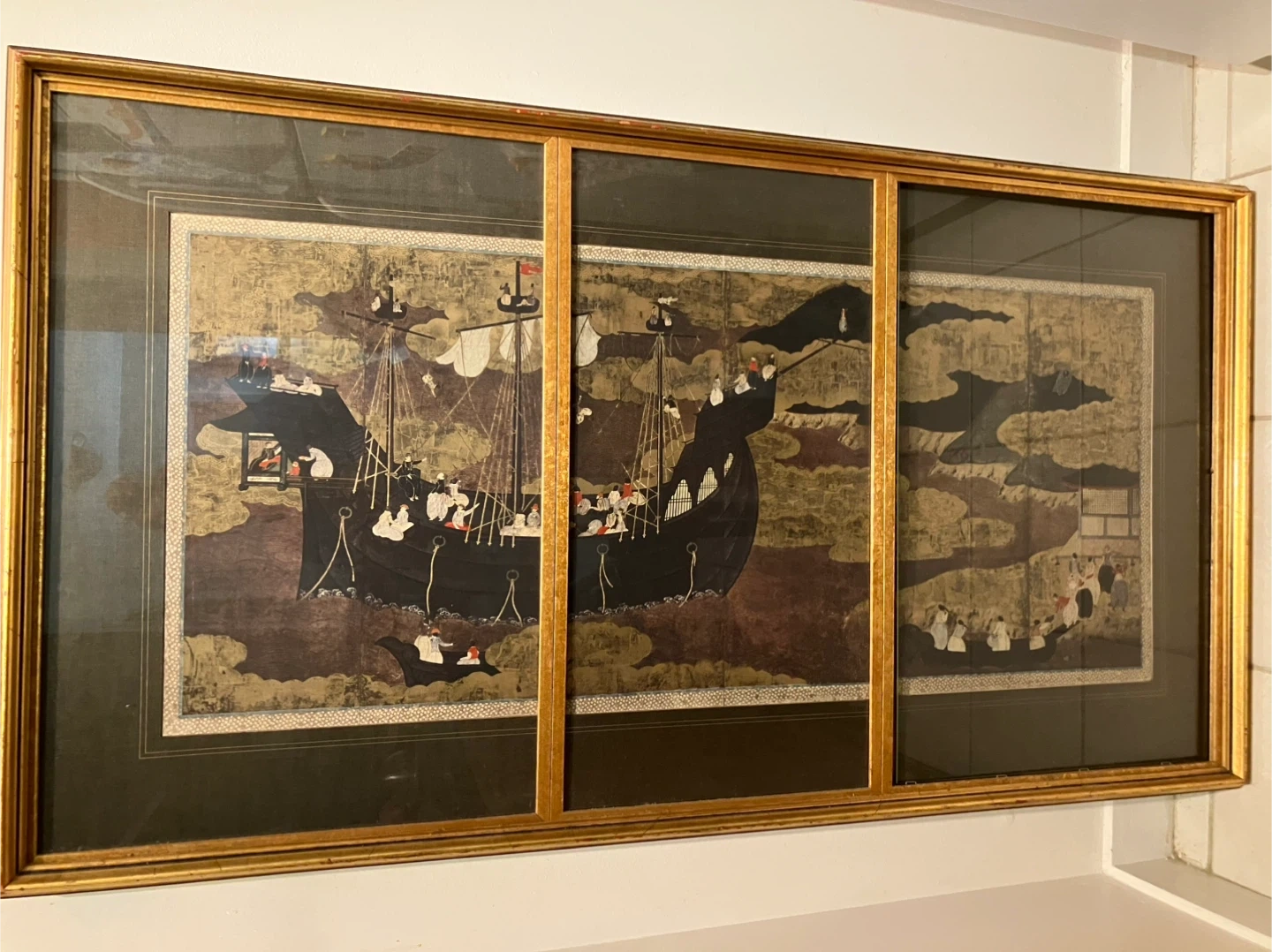

 83
83Professionally appraised at $600-$850 selling to make space. Been in the family for several decades. A brilliant 17th-century Japanese screen print depicting the arrival of Portuguese ships in Japan during the Nanban trade era. These ships were initially blown off course to Tanegashima island in 1543, marking the beginning of interactions between Japan and the West. Comes housed in a beautiful frame; it’s a large painting as big as a fridge almost! 55 inches wide by 29 inches in height. More on this 3 Panel Print: The Japanese referred to the Portuguese as "Southern Barbarians" (Nanban) due to their arrival from the south, and they brought new technologies like firearms and goods, while Japan exported swords and silver. Key Details Nanban Trade: The arrival of Portuguese ships in the mid-16th century initiated the Nanban trade period, during which Japan engaged in commerce and cultural exchange with European nations for the first time. Accidental Arrival: The first Portuguese contact was accidental, with a storm blowing their ship to the island of Tanegashima in 1543. Technological Exchange: Portuguese ships, often large and powerful, brought gunpowder and firearms to Japan, which significantly influenced Japanese military history. Artistic Depiction: The specific print is an example of Nanban art, which captured the exotic appearance of Portuguese traders and their ships. This era is also notable for the introduction of Christianity to Japan by figures like Francis Xavier.